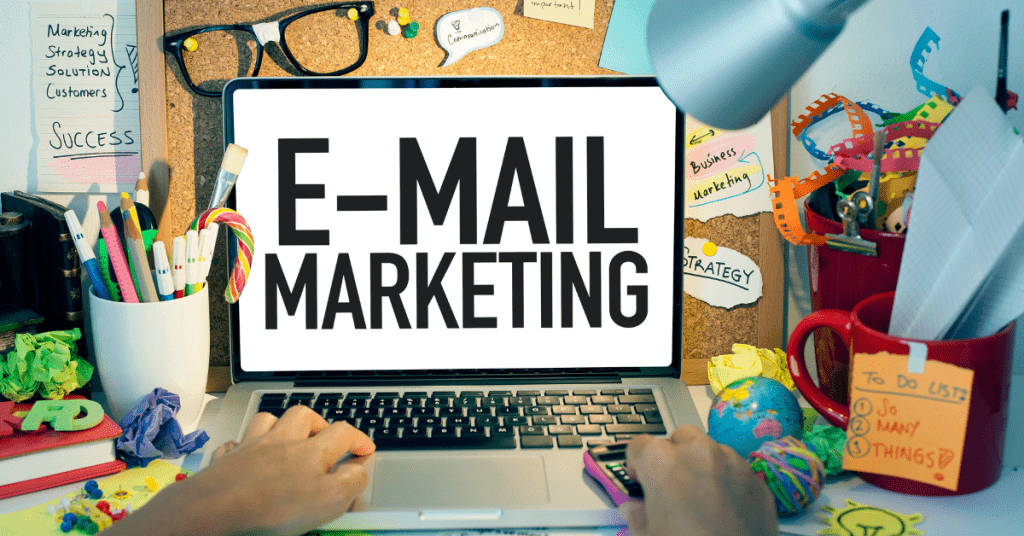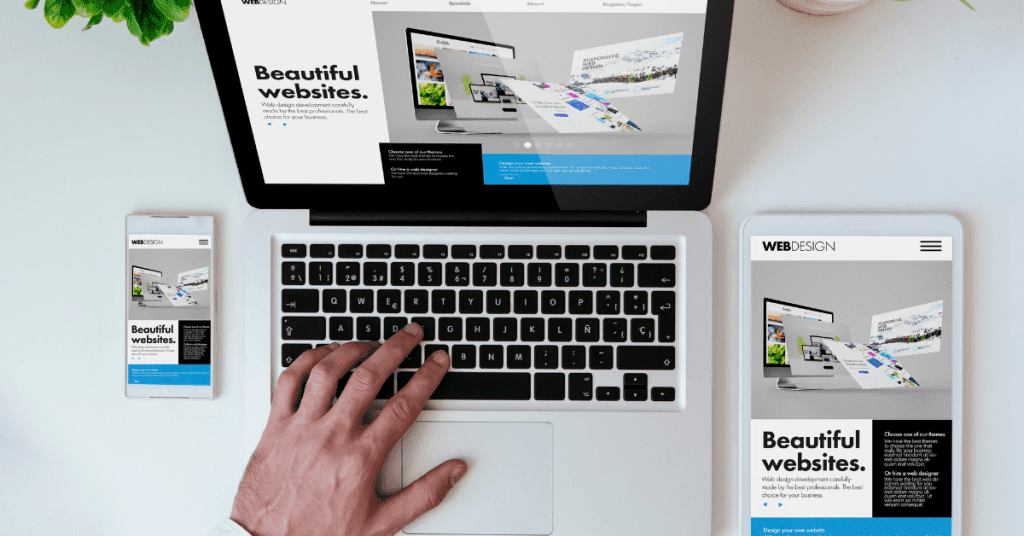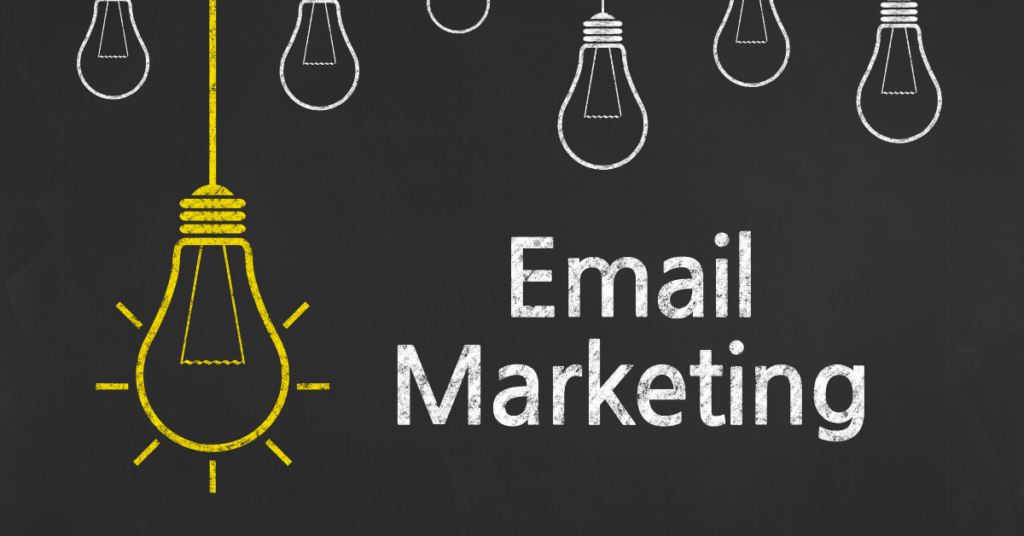Do you know the power of using the right words in your email marketing campaign can change your business? And we called this skill – copywriting.
Now, how many emails that you received every day?
Spam emails, update emails, promotion emails, newsletters, and so on. Personally, I am getting over twenty a day. From different businesses and platforms.

So, a simple opening like “I hope this email finds you well.” will not work. What they taught you in school is different from the real-world application.
School is not wrong, but simply not updated or creative enough to sustain the real world. Everything is crafted with the same mould.
In some cases, I will say your email does not sound human. It’s like a computer-generated email. Something that people don’t read.
Here’s why you should add some personalization to the email. And at the same time, create a few variations to see which copy works best.
And, this is where email A/B testing comes into play.
If you had never heard about A/B testing before, it’s creating 2 copies of emails, variation A and variation B. Then send out both variations to your email list and see which one has a better open rate or clickthrough rate.
Get Your Free 30 days GetResponse Account Today
What is A/B testing in
Email Marketing Campaign?
Email A/B testing, a.k.a. split testing, means sending one version of your email to one subset of your target audience and the second version of your email to the second subset of that audience. The version with the biggest number of opens, clicks, or conversions will be the winner. And will be used to send to the rest of your audience in the future.

In simple words, it tests multiple variations of the email to see which works best. This includes the email subject, headline, and sales letter.
Why is A/B testing essential for email marketing?
Well, just like the sales funnel or social media ads launched. You never know how your audience will react to the version launched. Or will it be another version that works best?
In digital marketing, you need to always optimize the copy to get the best one. Never trust your instincts in digital marketing, the smarter way is to rely on hard data.

Who knows a simple background colour change might increase the conversion rate by 10%.
When running A/B testing for email marketing, there are many elements that need to be tested.
This or that subject line? Long or more concise copy? Which CTA button? What about the design? There are many variables, and each can trigger your recipient to either open your email, click through, totally ignore it, or even opt-out from your list.
Without testing which elements of your email work or not, you will be just throwing spaghetti at the wall, hoping it will stick.
On the flip side, if you implement a regular A/B testing program in all your email marketing activities, you’ll avoid burning your budget on campaigns that miss the target.
Get Your Free 30 days GetResponse Account Today
Why A/B testing is Important for Email Marketing Campaigns?
There are several misconceptions and myths about A/B testing. And most time, business owners usually overlook split testing.
- Wrong Belief – people only focus on what they feel it’s important. And A/B testing is always not on the list. They only focus on perfecting the email and believed that it will work without realizing that data speaks louder in the digital marketing world.
- Limited resources – Many people who do not understand A/B testing always thought that they need more work to run email marketing A/B testing. But that is not the case, with email marketing software, one’s can run A/B testing easily by creating different versions of the email and sending a different version to a different group of audiences in the list.
- Lack of knowledge – the idea of running tests may seem too challenging and time-consuming to execute. The truth is, it doesn’t require an engineering skill set and experience. Just leave it to the software and it will do all the hard work. And even if you previously conducted some tests that led to nothing, there’s always room for improvement.
15 Elements To Test in Your Email Marketing Campaign A/B Testing
Whether you plan to send out your newsletter, an onboarding email, or a promotional email, each email consists of multiple elements.
Let’s break down the email structure and how you can test it out.
1. The sender’s name
When you look at your email inbox, the first thing to determine whether you open the email or not will be the sender\’s name. It’s more likely that you will read emails from people that you know or trust.
But should it be your name, company name, or brand name?
Have a look at three different approaches:
- Using the name of a real person and the company they work in – “Bennie Tay, CEO for BTE Apparel.” By doing this, you know exactly who is sending the email to you. Although sometimes it might be drafted and sent out by the team, it still feels more personal. This may increase the open rates because the recipients might feel more appreciated. It works perfectly if you have an established personal brand, but if not, it’s a good idea to test this approach.
- Using a company or the brand name but adding the word “team” – “The BTE Team.” You could use your brand name if it is reputable. As the brand is recognizable, making their impression with a fantastic group of people behind the brand instead of the brand name by itself might have worked out better for them.
- Using a company name but with different second words – “BTE Apparel”, and “BTE Premium,” The reason for that is to segment their types of messages. When people see the description, they will know what to expect.
2. Email Subject line
The next element shown in the inbox will be the Email subject line. It’s the decision point whether people go to the next step and open their email or skip it. See, your email content can be stunning and persuasive.
Your sales copy can be awesome, but if you don’t get their attention and click into your email. It will be going to the trash box.
There are several variables that you can experiment with:
- Length. A long or short subject line? Well, the first three to five words are the most important. Why? It’s shown on the inbox page. But you are free to add more descriptions. The rule of thumb is not to exceed 50 characters.
- Numbers. There are at least two types of emails where you can play with the numbers in the subject line. Number one: promo emails – Black Friday, Back to School, Christmas, 30%, 40%, 50% work their magic. Number two: case studies – “10K creator podcast origin lessons.” They have the potential to balloon your open rates.
- Capital letters. Capital letters catch attention compared to small letters. Having a mixture of capital and small letters works as well. But, suggest that it can be a whole CAPITALIZED word to emphasize it.
3. Preheader
Preheader is the third element that people see in their inboxes without opening an email. So, it’s another factor that influences the recipient’s final call: “to open or not to open?”
Preheaders give you more words to explain what to expect in the email. It’s like a trailer for your email, hinting at what to expect in the email.
4. Email design
Finally, it’s the email content design. Plain text or Full design?
It depends.
Who is your target audience? And what do you want to achieve in the email?
An onboarding email or newsletter can be a plain text email to deliver information to your audience. But for promotional or seasonal offer emails
No matter which email it is, the most important element will be the call-to-action button. What do you want your audience to do next?
Of course, directing them to your sales page.
In short, there are five elements of the email you can test:
- Text and font size
- Image selection
- Placement of image
- The number of CTAs
- Placement of CTAs
5. Copywriting
The visual part is vital, but if your message doesn’t resonate with your target audience, they won’t click on your link. They will just close and delete the email, and continue their work.
Every single word in your email shall be designed like a piece of art. To persuade them to make a purchase.
What you can test regarding your email copywriting is the length of your emails, the angle, and the word choice.
Read the Copywriting Secrets by Jim Edwards to learn more about how to effective copywriting skills.
6. Call-to-action (CTA)
This is the most important part of the email. Normally, a CTA comes in the form of either a hyperlinked text or a CTA button. No matter what your goal is for your email marketing campaign, the sales or conversion never happen in the email itself.

Instead, normally you will direct them to a landing page, whether it’s a squeeze page or a sales page. You need to get them to click on the CTA and go to your page.
- Hyperlinked text or CTA button?
- Coloured or black & white?
- Learn more or Read more?
- One CTA or multiple CTA?
- Where to put the CTA?
A solid A/B test will tell you that.
Again, when selecting the most influential words for the CTA, spy on your competitors and check our what are the most popular ones they used. You will come across an action-oriented copy, such as: Buy Now, Start Your Free Trial Now, Save Your Seat, Download Now, Get Instant Access Now, or something more generic like Read More, Learn More, Click Here.
People need to be shown what to do. Hence, always put the CTA on a clear area or surrounded by contrasting colours. For some cases, you might want to even have some arrows telling them where to click.
7. When to Send Out The Email? Which Day or What Time?
Now, what time in the day or which day in the week should you send out the email? You don’t want your email to be buried by others\’ emails at the bottom of the inbox list and not get noticed. Instead, it will be best that it appears on the top of the list when your audience opens the mailbox.
After experimenting for years, we found that the best time to send out an email will be in the morning when people just woke up, on their commute to work, and during their journey back from work. And this summarized to 6 am, 9 am, and 6 pm.
These three timing seems to be the best time to work for our lists so far. However, you should also validate that with your list to see if it fits well.
And the best way to do that? Split-test it.
The time is set, which day to send it out?
People seldom check emails on the weekend. Hence, we will be focusing on the weekdays only. And from experience, open rates tend to be higher on Mondays, Wednesdays, and Fridays.
Go ahead and try it out to see if it works for you too.
Get Your Free 30 days GetResponse Account Today
8. Email Frequency
After figuring out when to send it, how often to send it? The goal here is to achieve your marketing and business goals while not bothering your audiences too much.
They will opt out of the list if they feel uncomfortable about your email. However, you want them to look forward to your emails and not be annoyed with your emails.
So, you must be cautious with planning your email marketing campaign schedule and give breathing space between the send-outs.
This is where you track the data and the opt-out rate of your email list.
9. Opt down
For some reason, not everyone is going to stay. Let’s accept the fact, not everyone will like you. And it’s totally fine for that. Some of your subscribers may decide to leave you, even if you had not done anything wrong.
Don’t get emotional about it. Just move forward and build your business. They might just not match your dream customers\’ criteria.
Although the unsubscribe link is required to be under your email by law, you may also show them the option to opt down if they want.
By this, you can focus more on those who stay and want to work with you.
10. Offer
Now we are talking about the serious thing. To make the offer and get paid. A different email will have a different structure and goal. It’s all going to depend on the email type. A newsletter will have a different structure, more links, and a different goal than a product launch email or a promo code sales push.
Depending on the type, you will be building the content architecture differently, with unique hypotheses to test in each of them.
11. Visuals and images
Humans love visuals someone or something that they can relate to. Images help to catch people’s attention and absorb more information compared to plain text content. It applies to email marketing as well.
Although B2B newsletters are often based entirely on text, and imagery is associated mainly with B2C and eCommerce, visual impact email always works.
Experiment with various types of images: photos, unique illustrations, testimonials, or stock images, and see how each of them affects your email engagement rate.
12. Mobile – Responsive Design
Another aspect to test is how it works for different devices. For this, you might want to test it on a desktop, laptop, tablet, or mobile phone. Also, across different OS to see if it works well.

If it loads too slowly, or there are issues with the responsiveness or the ability to click the CTAs and direct to the link, all these need to be resolved before sending to a mass audience.
Sending newsletters with a flawed mobile version will hurt your campaigns and reputation. With today’s users’ attention span, everything in your email needs to work perfectly – especially on their smartphones.
13. Landing pages
This is not a part of the email marketing campaign, but you want to ensure their destinations work. An email will just be an email if it doesn’t direct people to the landing page.
The sales happen on the landing page, but not the email.
You’ve tested your subject line, content, and mobile design. But, the next step appears to be equally important.
There are several aspects of landing pages you need to pay attention to. So, make sure your landing page is:
- Simple and clean
- Only consists of important elements like headline, subheadline, sign-up form, CTA button, and checkout
- Simple actions and decisions you want your visitors to make
- Only a single goal per page
- Optimized for mobile responsiveness
14. Social media links
People need to see you at least 7 times before making a purchase. You want to have more touch points to them as possible. Also, what’s better than for them to be your ambassador for your business?
Your subscribers are probably also your followers on social media. And you want this. So, growing your email list can sync with building up your organic social audience.
Find a way to entice them to follow you on social media with a tangible value that you’re going to share on Facebook, Twitter, LinkedIn, or TikTok that won’t be a repetition of what you’ve already shared via newsletters.
To do this, you can add the social media share button at the end of your emails.
15. Footer
The social media buttons we touched upon above are the most common elements of emails’ footer. But you would want to add on other things like your other offers, contents, unsubscribe links, terms of service, and logo to fulfil the compliance requirement.
While the footer is not a critical factor affecting your email marketing campaign drastically, you can always try testing it if you want.
Final Thoughts – A/B Testing Email Marketing Campaign
Now, we had shown the 15 elements in an email campaign that you can and should split test when launching an email marketing campaign, now it’s your turn to try it out.





